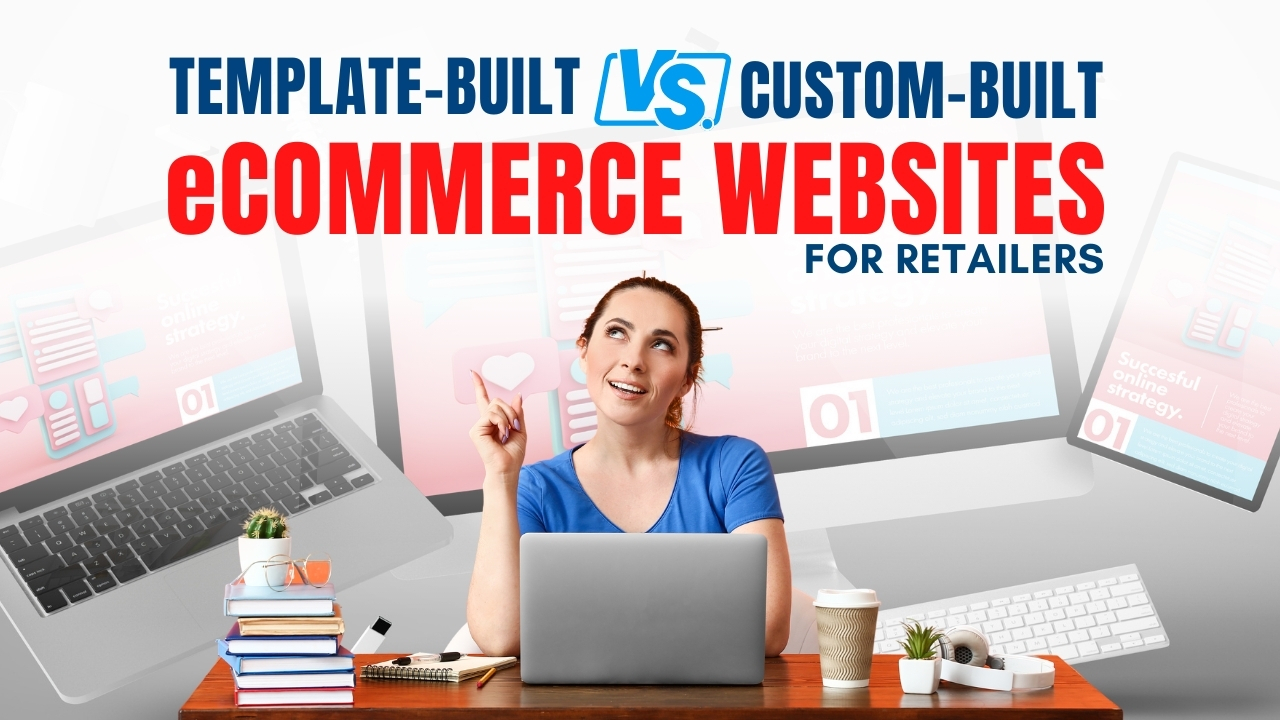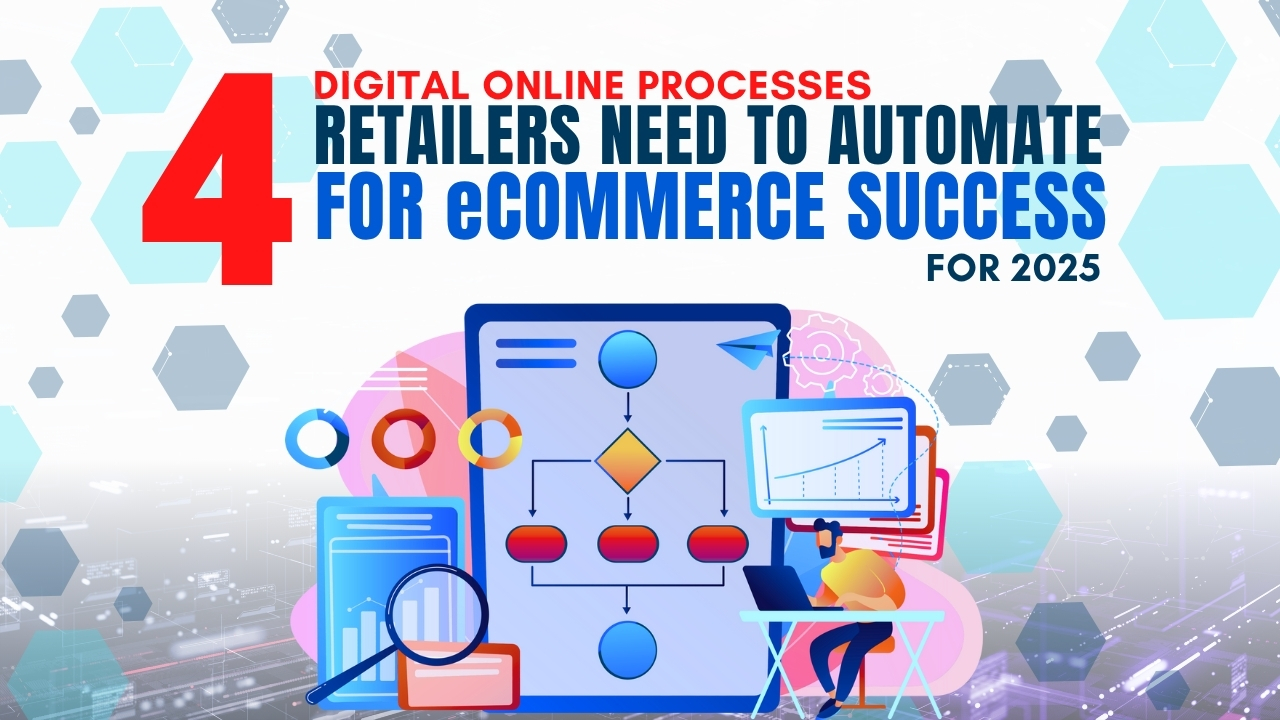Blog
Template vs. Custom-Built eCommerce Websites for Retailers
April 18, 2024 / 8 minute read / By Nick Borowitz
 2024
2024Blog
 2024
2024Retailers who want to sell online must take a strategic approach when deciding how they want their eCommerce websites to appear. But that raises an entirely different question: HOW do they get their websites to appear the way they want?
There are countless eCommerce providers for retailers, many names you’re likely familiar with. The commonality of many of those is using a template to build your own eCommerce website or opting for a fully custom website.
We will explore the differences between a template eCommerce site vs a custom eCommerce site and, hopefully, help small to medium retailers determine which is best for their business!
An eCommerce website that matches a retailer’s branding is essential for marketing and keeping customer attention. You want visitors to know they’re on the correct website, and it has to be easy to navigate where it flows from page to page.
Suppose a retailer or business owner has no idea how to build a website from scratch and doesn’t know the intricacies of web design. The idea of being able to turn to a provider who can supply you with the framework is a great alternative.
Having turned to a provider, they will likely offer two options: the custom-built eCommerce website or template eCommerce website. A brief glimpse of what each can provide and potential drawbacks include:
| Website Type | Pros | Cons |
|---|---|---|
| Template eCommerce |
|
|
| Custom Design eCommerce |
|
|
With that basic overview of their primary differences, it is time to examine some aspects a retailer should consider when shopping for an eCommerce website.
The question might be obvious. However, not everyone who has an eCommerce aims solely to sell products. Consider overall goals and long- and short-term plans.
Another critical factor to consider is the budget for an eCommerce website. Template-style eCommerce websites are more affordable in the long run and offer the essentials for online sales. If a retailer wants to add more advanced online features, the custom-built route may make more sense as the business grows and the website receives high traffic.
Take a look at three scenarios where a different eCommerce platform is necessary:
In addition to the overall costs of the template or the custom website, ongoing services must be part of the cost equation. Template eCommerce websites are generally easier to maintain and, if something happens, relatively simple to repair.
With custom eCommerce websites, site maintenance costs can be varied. Some providers may include ongoing service in package deals or as a promotion. Others may bill by the hour, project, or webpage if something breaks on the site.
While the choice of website is important, you need to make sure that your website is mobile-friendly. Online shopping via mobile is a prevalent form of making purchases or beginning the shopping journey. Whatever type of eCommerce website a retailer settles on, verify with the provider that the pages automatically convert for the best viewing experience.
eCommerce website customization should follow after establishing goals. As business (hopefully) grows, retailers will want a website that can grow with them.
If you sell merchandise, selling to customers with a primary credit processor or using payment apps might suffice when getting started. As your product offerings grow, you will need more filters on your site to help customers sort through merchandise.
Here are a few more examples to consider:
| Features | Template eCommerce Website | Custom eCommerce Website |
|---|---|---|
| Branding and aesthetic | Limited customization options, typically involving adding a logo and changing color schemes. | Customization potential, allowing for personalized branding elements throughout the entire website design. |
| Product and display layout | Limited control over how products are displayed on the website, often following preset templates. | Control over product display layout, enabling retailers to design unique product pages and search result layouts according to their preferences. |
| Navigation and user experience | Basic navigation options with limited search filter customization. | Customizable search and navigation tools, tailored to effectively guide website visitors and enhance their browsing experience. |
| Marketing and promotions | Limited options for using unique banners and promotional offers, typically restricted to preset templates. | Flexibility to implement unique marketing strategies, including custom banners, promotional pop-ups, and exclusive deals to engage customers effectively. |
| 3rd Party Integrations | Limited integration capabilities, often requiring additional modifications for third-party tool usage. | Compatibility with third-party tools and platforms, allowing for integration of specialized features and functionalities. |
While it may appear that in broad terms a template web site cannot be modified, depending on the eCommerce provider that you choose, there should still be opportunities to make it yours with flexible templates and options. Visual elements can be easily changed out, page layout can be moved around, product grids changed to a retailer’s preference, videos and image embeds can be played with, and more are often available.
In the interest of helping small to medium businesses, eCommerce website providers are prone to helping users make changes that might have the appearance of being custom elements.
This is a straightforward task that many retailers let fall to the wayside and then ask themselves, “Why are we not ranking on Google anymore?”
Ensure the custom or template eCommerce website is easy for all search engines to crawl. When selecting a provider, ensure that you, as the site owner, can easily modify the metadata.
The same applies to content for product listings, blogs, articles, posts and anything else on the website. When crafting new content, retailers need to do keyword research and know what keywords they want to target.
The very last thing any retailer wants is to have repeat content that their competition is using. This can happen since retailers in the same vertical could all be using the same distributors/vendors and pulling identical product descriptions from the vendor’s online product feeds.
When choosing your eCommerce provider, check if the vendor offers online product feeds from your suppliers, and if so, confirm its capability of being modified. If you have the ability to customize the product descriptions, to make them a bit more unique and not the exact same as all of your competitors, it will have a huge impact on your overall website’s SEO strategy.
Ongoing SEO maintenance is critical to a website that consistently ranks higher when people search for products and services your retail business provides. Simply “setting and forgetting” keywords, phrases, and metadata means the website will become stale regarding search engine algorithms.
Learn More About: Search Engine Optimization Strategies for Retailers of any Size
While template eCommerce websites may be more simple, there are always strategies that can keep the website relevant. Using the latest plugins, adding new products and pages, and external functionality for users on different devices is a solid way.
The same is applicable for custom-design eCommerce websites. With their enhanced functionality, retailers have many options and ways to keep their websites updated to stay relevant.
No matter the choice, both website types offer plenty of functionality for retailers when they know what they want to accomplish.
The only limitation is not using the eCommerce website to its full potential!
Visit our Learning Center for educational content on eCommerce strategies and information for making the most of custom and template eCommerce websites.
 Discover how GEO is reshaping search, and what smart retailers must do now to stay visible on AI-powered… |
 With more people shopping online than ever, SMB retailers need a plan to ensure the most conversions… |